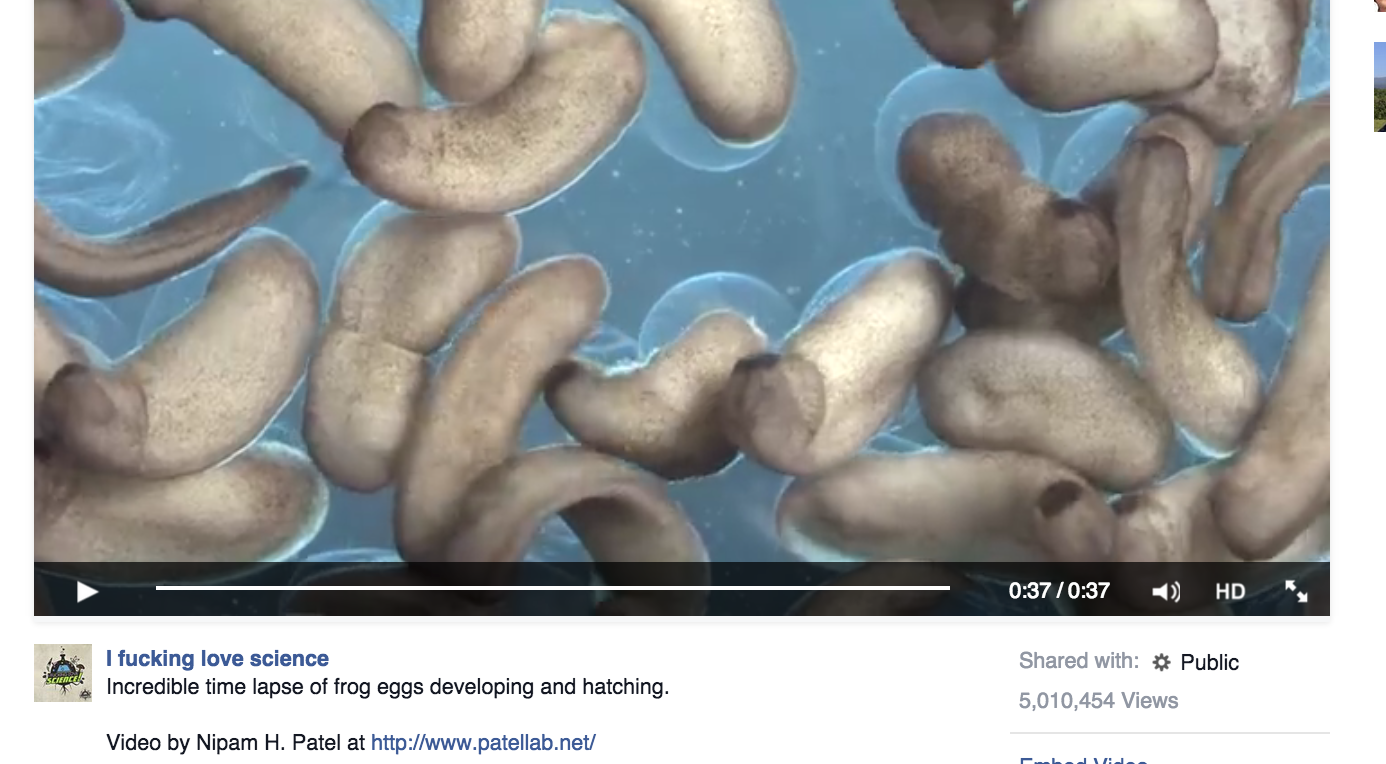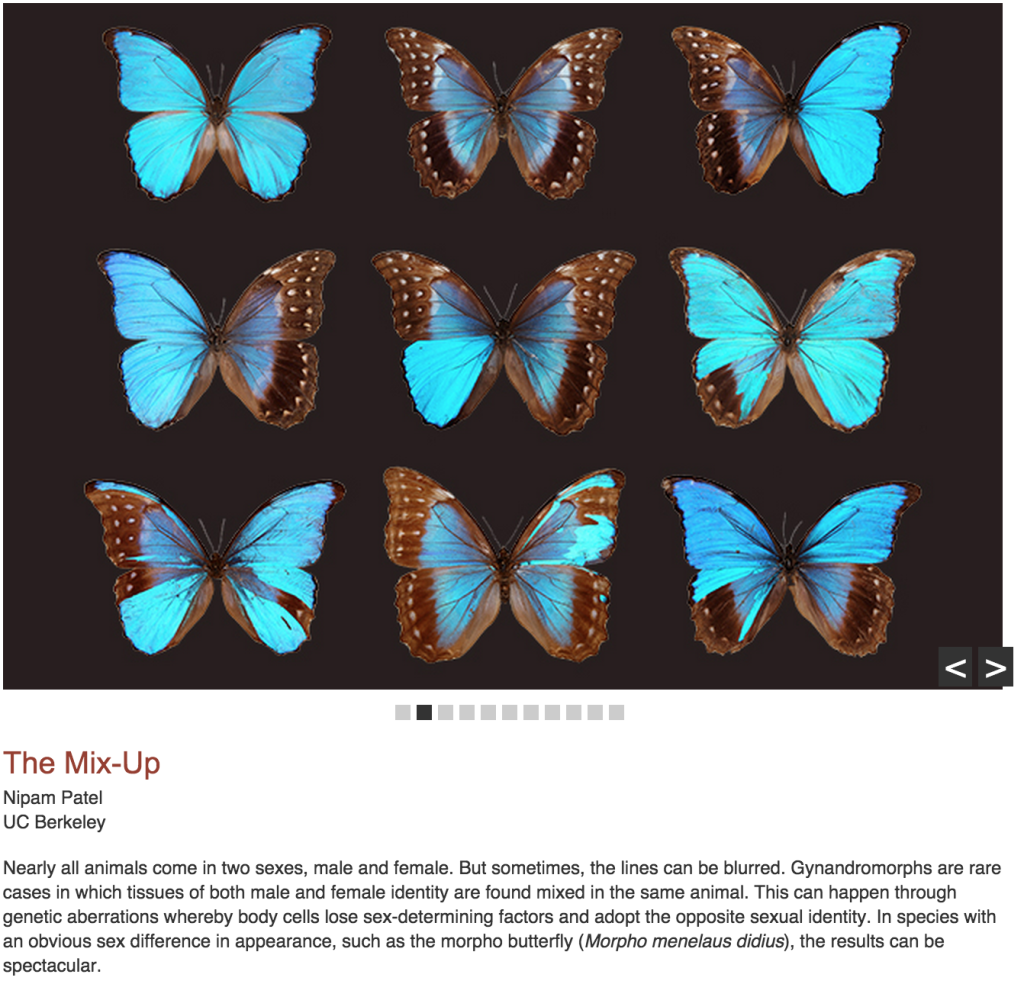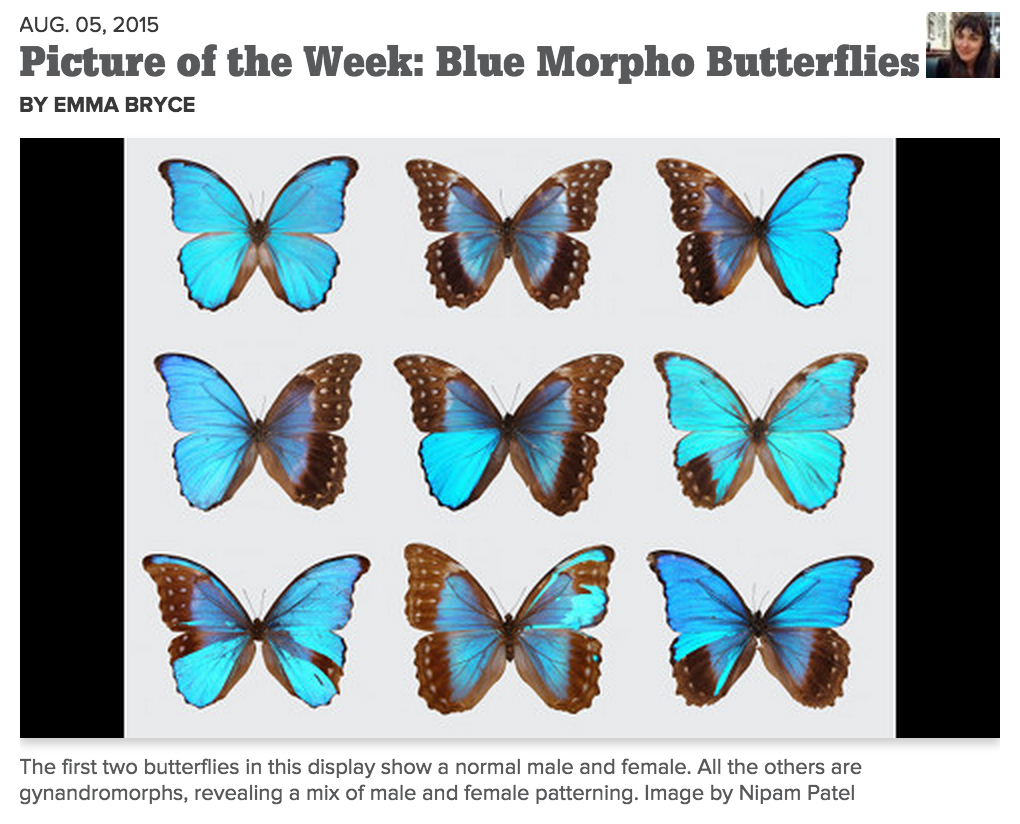Nipam’s striking display of Blue Morpho gynandromorph’s was featured on Cell Picture Show, “The Biology of Sex”, as well as Science Friday Picture of the Week.
From Science Friday:
This is no ordinary butterfly collection. It’s a showcase of blue morphos (Morpho didius), a species native to the forests of South America whose wings—especially the males’—are famed for their brilliant aquamarine sheen. While the first two specimens are a typical male and female, the others are “gynandromorphs”—that is, animals that contain both male and female cells. In these butterflies, the trait manifests on the wings as a patchwork of colors and patterns, borrowed from both sexes.Gynandromorphism occurs most notably in butterflies and moths, though it can also occur in birds and crustaceans. In insects, it arises either through the loss of a sex chromosome during cell division, or when two sperm fertilize an egg that happens to have two nuclei inside of it, a process called double fertilization. Both processes ultimately result in organisms composed of a combination of male and female cells.In blue morphos, this cellular eccentricity is most obvious on the wings, manifesting as “bilateral” wings, where one is “female” and the other “male,” or “mosaic” wings, which contain a mixture of male and female patterns. Nipam Patel, a biologist at the University of California, Berkeley, who studies the evolution of development in animals, including butterflies and moths, is using these unusual displays to better understand how butterfly wings develop in the first place.Researchers think that in the earliest stages of wing growth, cells divide and multiply in several distinct regions. As the cells in each region grow, they eventually hit molecular “boundary lines” that somehow prevent them from expanding farther (researchers aren’t sure how the mechanism works). In the vicinity of those lines, chemical signals are secreted that trigger a series of genes that tell each cell what type of wing cell it will ultimately develop into.“The signalling is the same whether [the cells] are all male, all female, or mosaic,” says Patel, who created the image above. But the way the cells interpret the signals depends on their sex, he says. For instance, regions of male cells might take the signals as a cue to develop the wing structures that appear iridescent blue in sunlight. Groups of female cells, on the other hand, might read the signals as a sign to develop brown and cream coloring.“The color patterns seen on the wings are important for things such as warning coloration, mimicry, sexual selection, and camouflage,” Patel says. “Getting those patterns right is important to the survival and reproductive success of the butterfly or moth.”How gynandromorphic butterflies’ novel patterning affects their ability to survive and propagate is unclear. But for researchers, the extraordinary visual quirk is an advantage. When, by chance, regions of male cells and female cells occur adjacent to one another on a blue morpho’s wing, the contrast reveals the location of those molecular boundary lines—and hence, where core wing developmental areas are. (Indeed, in the uniform tissue of a normal butterfly’s wing, the lines are invisible.)By mapping the precise locations of the lines, researchers might be able to determine what molecules govern those demarcations. And, “if we understand the molecules that shape the boundary lines,” says Patel, “we’d understand a very early step in building the wing.”



